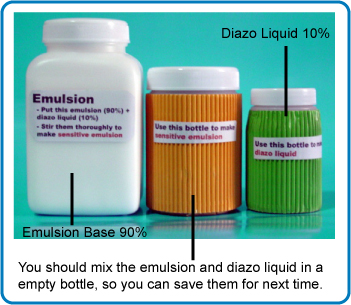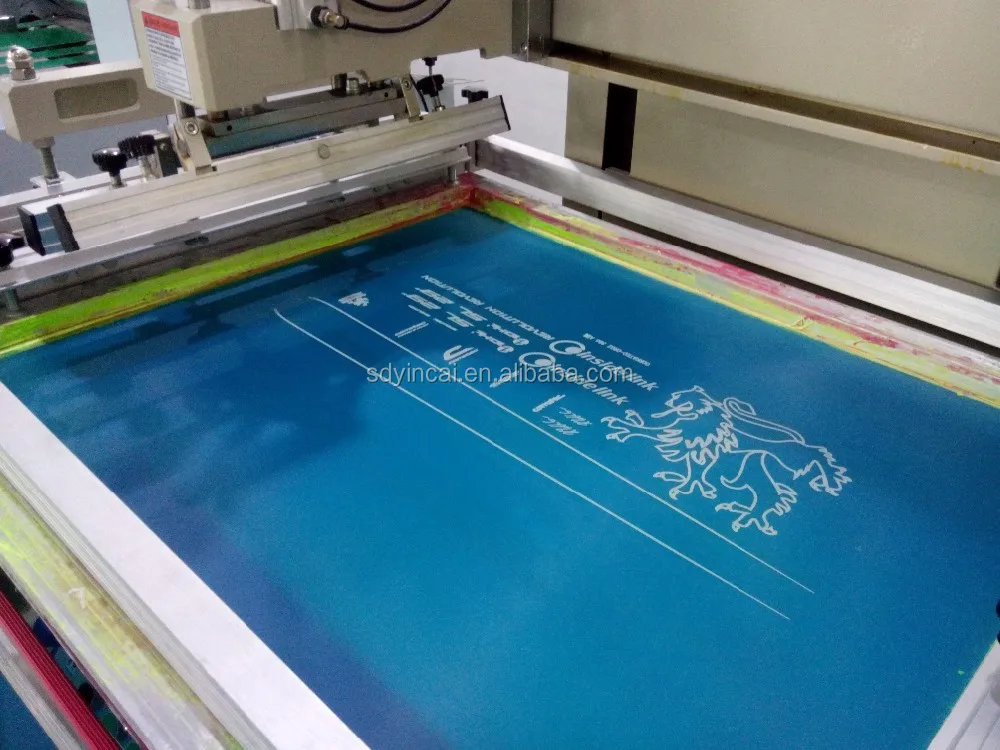

and keep spreading and flipping until you have a thin even layer across the entire screen. Flip the screen over and repeat on the other side. and use the squeegee from your kit to spread a thin layer of the emulsion across the screen. Spread a small amount of the photo emulsion on one side of the screen bottom.

You will want to do this step in a fairly dim room since the photo emulsion reacts to light. Step 5: Applying Photo Emulsion to the Screen This will help with the next step of spreading the emulsion (and provide little "legs" for your screen to sit on while it dries). Turn your screen so the bottom part is facing up and insert a pushpin into each corner. the screen is flush with the bottom of the frame). The bottom of your screen is the non-recessed part (i.e. Mix the sensitizer (black liquid) into the photo emulsion bottle (bluish liquid) until the mixed liquid becomes a slime green color: This process is a little tedious because the residue in the bottle is coagulated at the bottom.I used a small clean paint brush to mix it so I could "swish" the residue off the bottom. Follow the directions but basically you add water to the sensitizer and mix it up. The kit has a large bottle of photo emulsion and a small bottle of sensitizer. I don't have the best printer so I save my image to a disk and take it to Kinko's and have them print the transparency for me.the transparencies run about 75 cents a piece.they are also much crisper printed from a commercial laser printer! Stack each of the transparencies on top of each other to create a complete "blackout" of the image.I use a little tape on the corners to keep them together. Print 2-3 copies of your image to a transparency. I've included a few images at the bottom of the post and I'll be designing a few more just for you over the next few weeks. I designed my little Matryoshka doll in Powerpoint of all things (I don't have a graphics program) using basic shapes and dingbat fonts.just overlapping white and black shapes. It is best to wait until the sun is high in the sky (i.e. Note: I use natural sunlight for my light source. The photo emulsion hardens where light hits it and will wash away where light doesn't hit it (leaving an image behind). You use light to expose an image onto the screen to make a stencil. Just a quick simple explanation of how the the photo emulsion process works:īasically I think of it as film. I've tried to break it down here into the most basic of steps and without the fancy lingo: The photo emulsion method usually scares people off but it produces the most amazing results because you can do such detailed images (thin lines, small text, etc.).

There are several methods included in the kit: screen filler method, drawing fluid method, and photo emulsion. I used this Speedball Screenprinting kit from Dharma Trading which included almost everything I needed. This would be a great way to make Christmas presents for the whole family! I'm making t-shirts for gifts! Also many of you often ask me where I get the cute t-shirts I use for dresses.I often make them and you can too. I just love her! I took some photos of the process I used because I think it is so easy and efficient and I know you all would love doing it. This is a new little Matroyska screen print that I designed for some dresses. Airbrushing, Stenciling, & Body Art Supplies.Non-Toxic Markers (Best Markers For Kids).Dyes For Painting on Cotton, Rayon, Linen, & Hemp.


 0 kommentar(er)
0 kommentar(er)
